Key takeaways:
- Remote work has transformed work-life balance, emphasizing the importance of setting boundaries to maintain productivity and focus.
- Technology advancements have facilitated seamless collaboration in music journalism, allowing for unique storytelling and wider exposure of independent artists.
- Effective remote work relies on utilizing the right tools, such as communication platforms and project management software, to enhance organization and efficiency.
- Audience engagement in music journalism thrives on interactive elements and analytics, which shape content strategies and foster community connections.
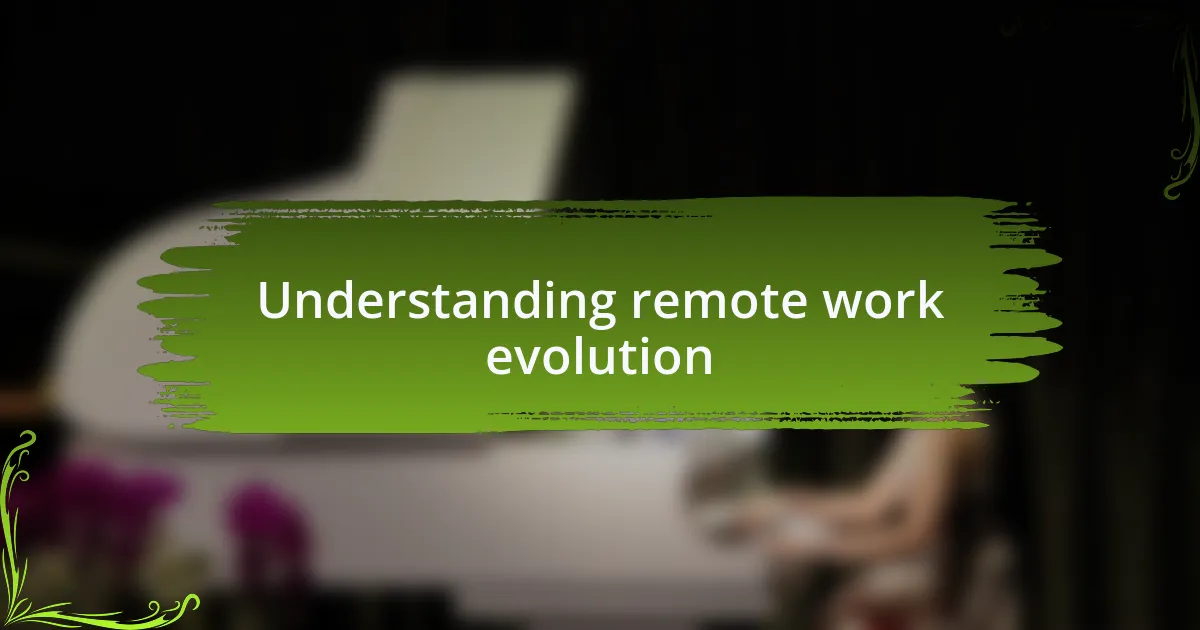
Understanding remote work evolution
Remote work has transformed dramatically over the years, evolving from a niche practice into a mainstream option for many professionals. I can recall my own first experience with remote work; I was skeptical at first. Would I be able to maintain my productivity? Surprisingly, I found that I thrived in a home environment, with fewer distractions than the office setting.
This transition hasn’t just changed where we work; it has reshaped our work-life balance. I often ponder how many of us have struggled with that blurred line between personal space and professional obligations. For me, setting boundaries was essential. I remember establishing a dedicated workspace at home, which made a world of difference in managing my time and focus.
Moreover, the advancement of technology has significantly influenced remote work’s evolution. I feel excited about the tools that connect us; video conferencing and collaborative software have made teamwork across distances manageable and, at times, seamless. How has technology impacted your work experience? Personally, I believe it has opened up opportunities to collaborate with diverse talents, enriching my projects beyond what I could have imagined.
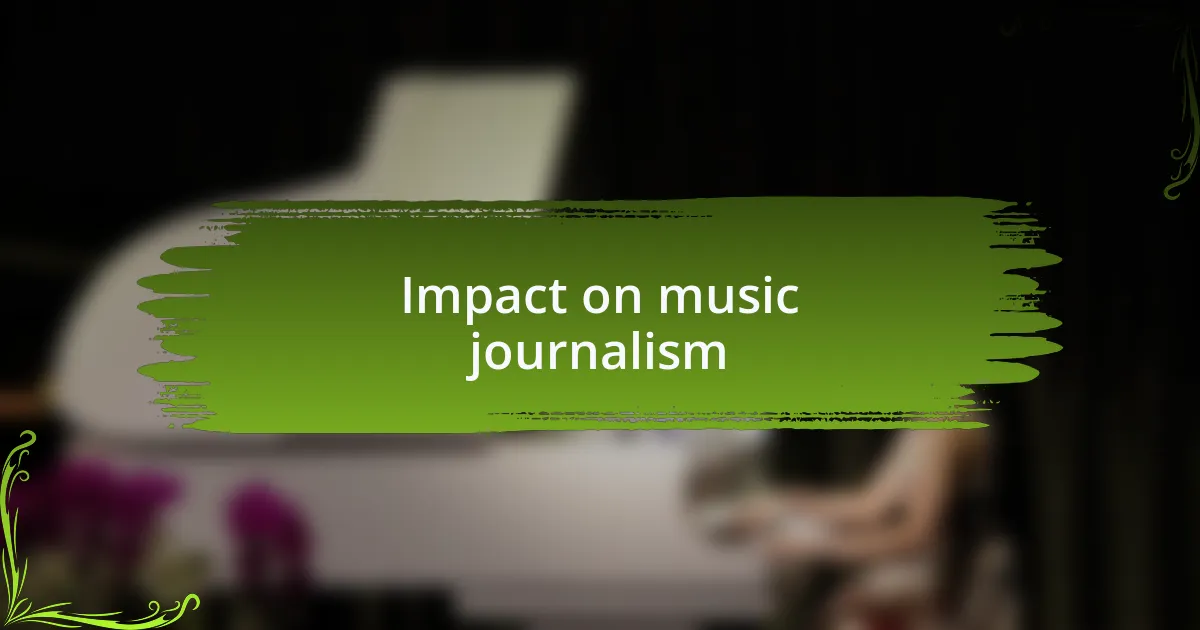
Impact on music journalism
The shift to remote work has significantly impacted music journalism, allowing journalists to connect with artists and audiences in unprecedented ways. I remember attending virtual press conferences and live streams during the pandemic; they allowed for more intimate interviews and immediate access to emerging talent. How surprising it was to realize that I could engage with musicians from around the globe, all from my living room!
As I adapted to this new landscape, I found that remote work also changed how we consume music-related content. With more platforms available for streaming and sharing, I noticed a sudden influx of independent artists gaining attention. It’s a thrilling prospect for music journalists like myself, as we can now spotlight a wider array of voices that might have been overlooked in traditional settings. Doesn’t it feel empowering to champion unique sounds and stories that resonate?
However, this evolution hasn’t come without challenges. The competition for attention has intensified, and I’ve sometimes felt overwhelmed by the sheer volume of content out there. Yet, I also see this as an opportunity to hone my own storytelling skills. By focusing on authentic narratives and meaningful connections, I believe we can cut through the noise and truly engage our readers, making music journalism both relevant and impactful in this digital age.

Changes in writing and reporting
The way we write and report on music has transformed drastically with remote work’s rise. My experience in crafting articles from home led me to explore different storytelling techniques that resonate more personally with audiences. I’ve started integrating multimedia elements, like video snippets and social media posts, into my pieces, creating a more dynamic reading experience. Have you felt the difference when articles come alive with visuals?
Furthermore, the immediacy of remote connections has pushed me to prioritize real-time updates and reactions in my writing. I vividly recall live-tweeting a surprise album drop, allowing readers to join the conversation as it unfolded. It felt electric to share that moment with others, but it also made me question how to balance timeliness with depth. Shouldn’t we strive to provide context and analysis rather than just surface reactions?
In this new landscape, our traditional writing styles must evolve. I’ve found that personal anecdotes, my own opinions on music, and conversations with artists deepen engagement. Reflecting on how these interactions shape my perspective reminds me of the human element behind the music. Isn’t it fascinating how every story we tell connects us to something larger within the industry?
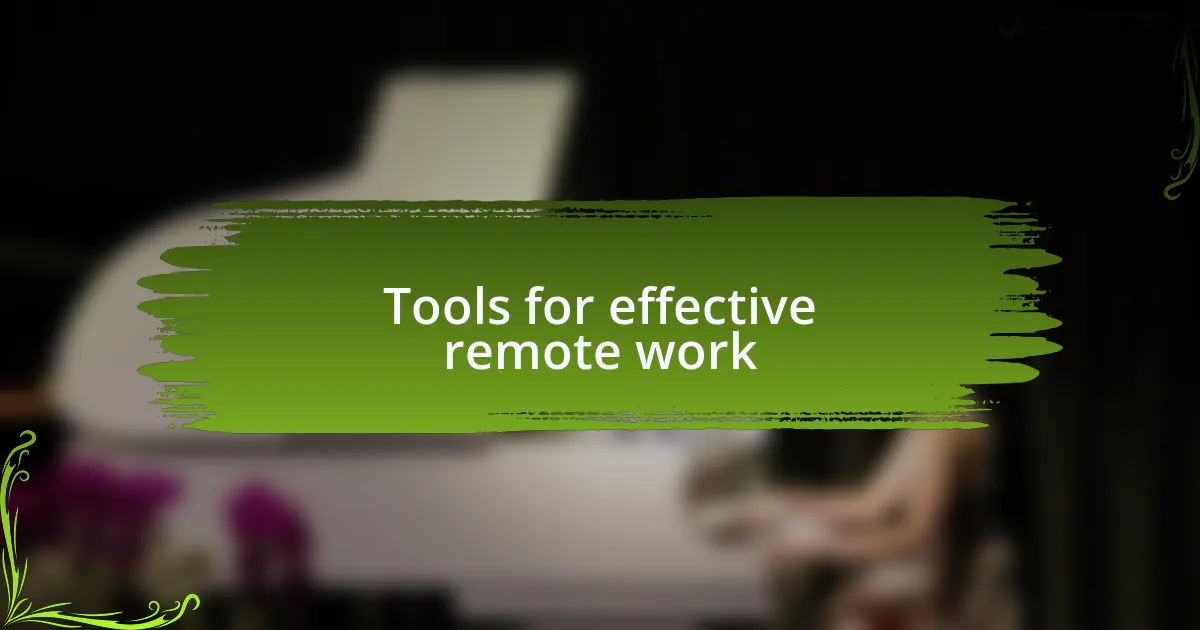
Tools for effective remote work
Effective remote work hinges on having the right tools at your fingertips. For me, using platforms like Slack for communication has been a game-changer. I vividly remember a heated discussion among fellow journalists about the best album of the year, which felt incredibly engaging as we all chimed in with our insights immediately. Have you experienced that thrill of vibrant debate through your screen?
When it comes to organizing thoughts and deadlines, I swear by project management tools like Trello. I once used it to map out a series of articles for an upcoming festival, breaking down tasks and assigning deadlines. Seeing everything laid out visually helped me feel less overwhelmed and kept my motivation high. Isn’t it remarkable how a simple checklist can transform a chaotic workload into an organized, manageable plan?
For sharing audio or video content, I’ve found that using Dropbox or Google Drive brings a level of efficiency I never knew I needed. There was a time when I struggled to gather various interview clips for an article on emerging artists. Now, with just a few clicks, I can access everything I need. It makes collaborating with fellow writers and musicians that much smoother. Don’t you agree that the right tools can turn daunting projects into enjoyable experiences?
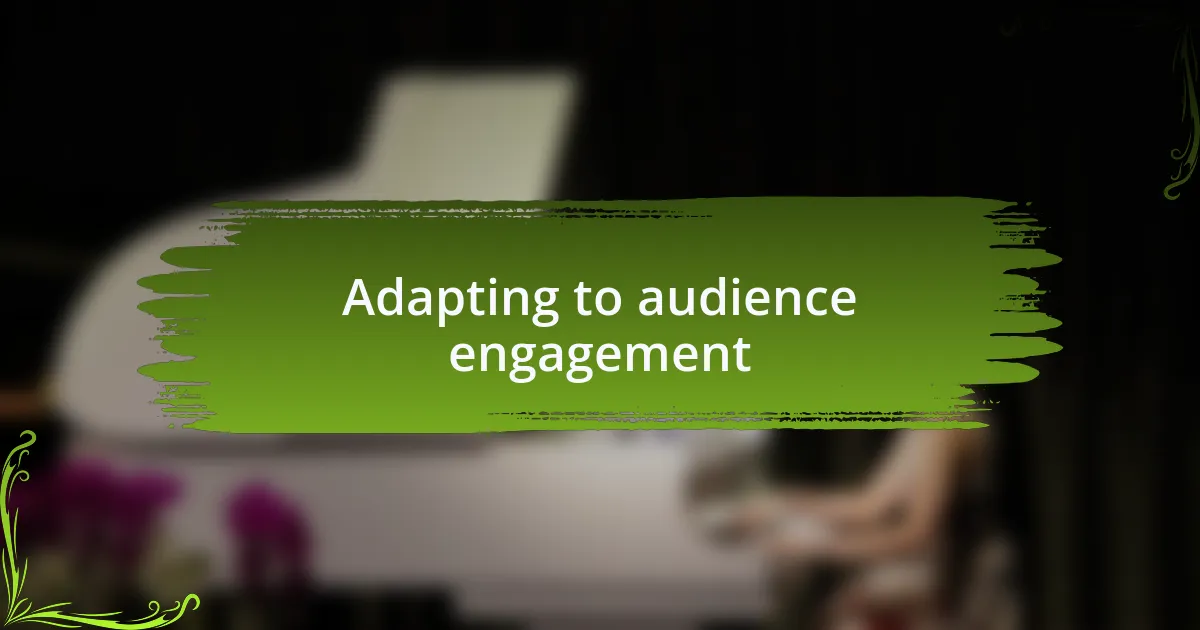
Adapting to audience engagement
Engaging an audience remotely requires a deep understanding of their preferences and habits. I often find myself sifting through comments and social media reactions to see how listeners respond to the music articles I write. It’s a bit like being in a crowded room where you can hear the buzz of excitement or the whispers of dissent. This feedback loop not only informs my writing but also fuels my passion for connecting with the audience on a personal level.
When I incorporate interactive elements such as polls or Q&A sessions in my work, the response is often exhilarating. I remember posting a question about favorite concert experiences and watching the flood of memories shared by readers. Each comment transforms the piece into a two-way street, enhancing the feeling of community that we all crave, especially in a world that often feels divided. Doesn’t it feel fantastic when you realize your words can spark such connection?
Utilizing analytics tools has also reshaped my approach to understanding audience engagement. I’ll never forget the moment I discovered that my feature on indie bands resonated far more than my analysis of mainstream hits. That data shaped my content strategy, showing me that there’s a treasure trove of insights waiting in the numbers. Isn’t it fascinating how embracing analytical tools can help refine what we create and ultimately strengthen our connection with listeners?
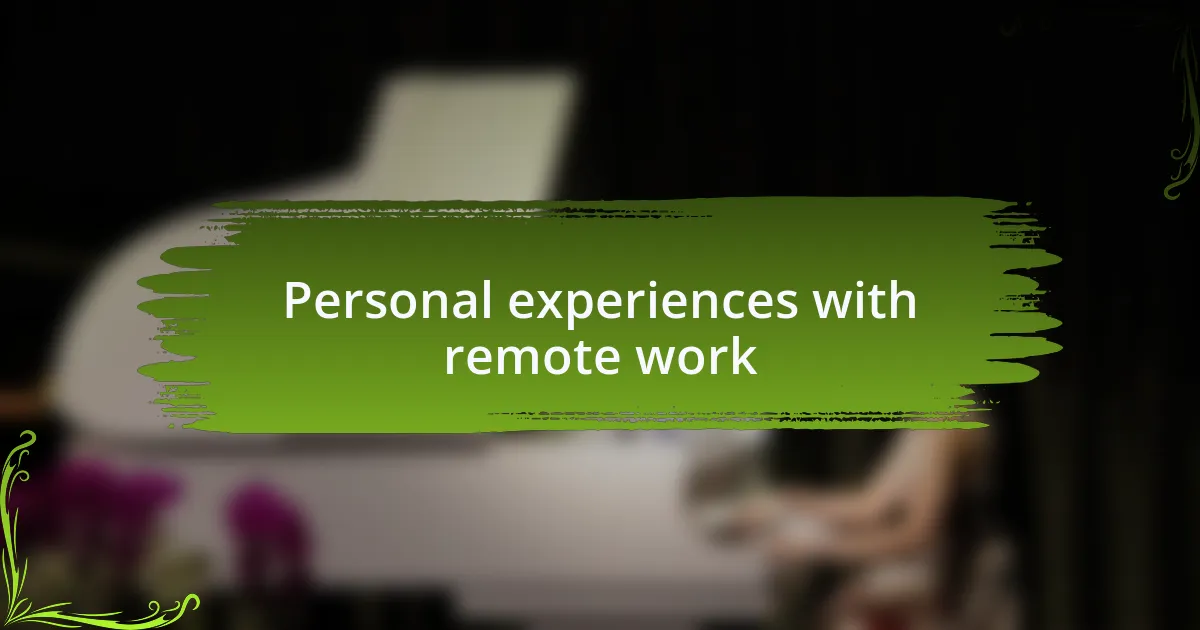
Personal experiences with remote work
Remote work has been a significant shift for me, especially in the realm of music journalism. I vividly remember the first time I attended a virtual press conference; it felt surreal. Sitting in my living room, I realized I could connect with artists globally without the need for travel. Yet, there was a strange loneliness in interacting with a screen rather than feeling the energy of a live audience.
Working from home has also offered me unexpected creative freedom. I recall a late-night writing session inspired by a song that kept me awake. Distractions were minimal in my quiet space, which allowed my thoughts to flow freely. Have you ever found that your best ideas come at the most unorthodox times? For me, that solitude often transforms into inspiration — a blessing of remote work.
However, the challenge of maintaining a work-life balance has sometimes weighed heavily on me. There were days when music articles felt endless, blurring into late-night hours that should have been spent unwinding or enjoying a concert, even virtually. It made me wonder, how do we set boundaries when our workspace is also our sanctuary? Balancing productivity and personal time remains a dynamic dance in this evolving landscape of remote work.